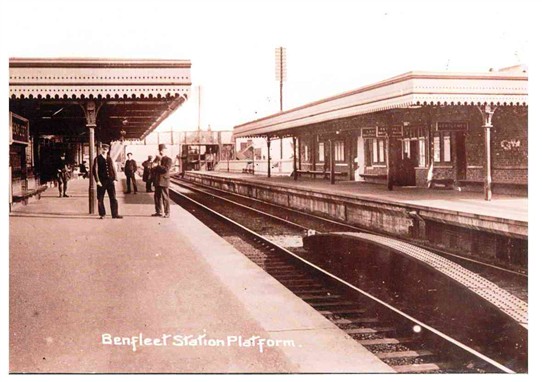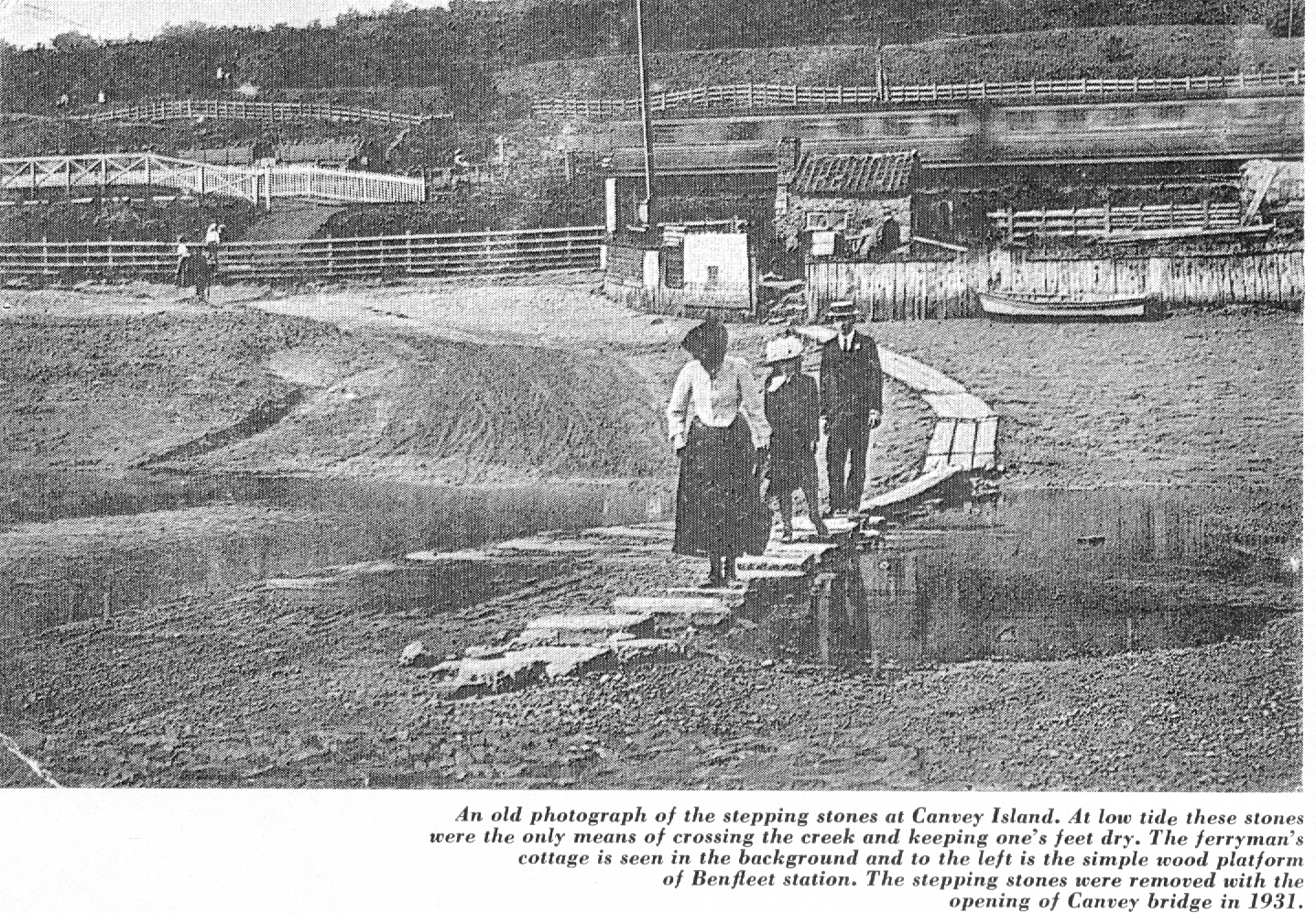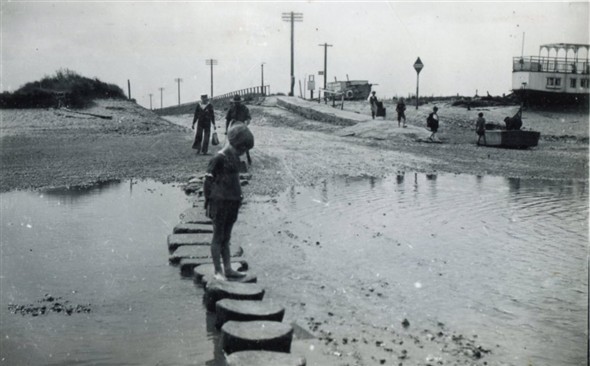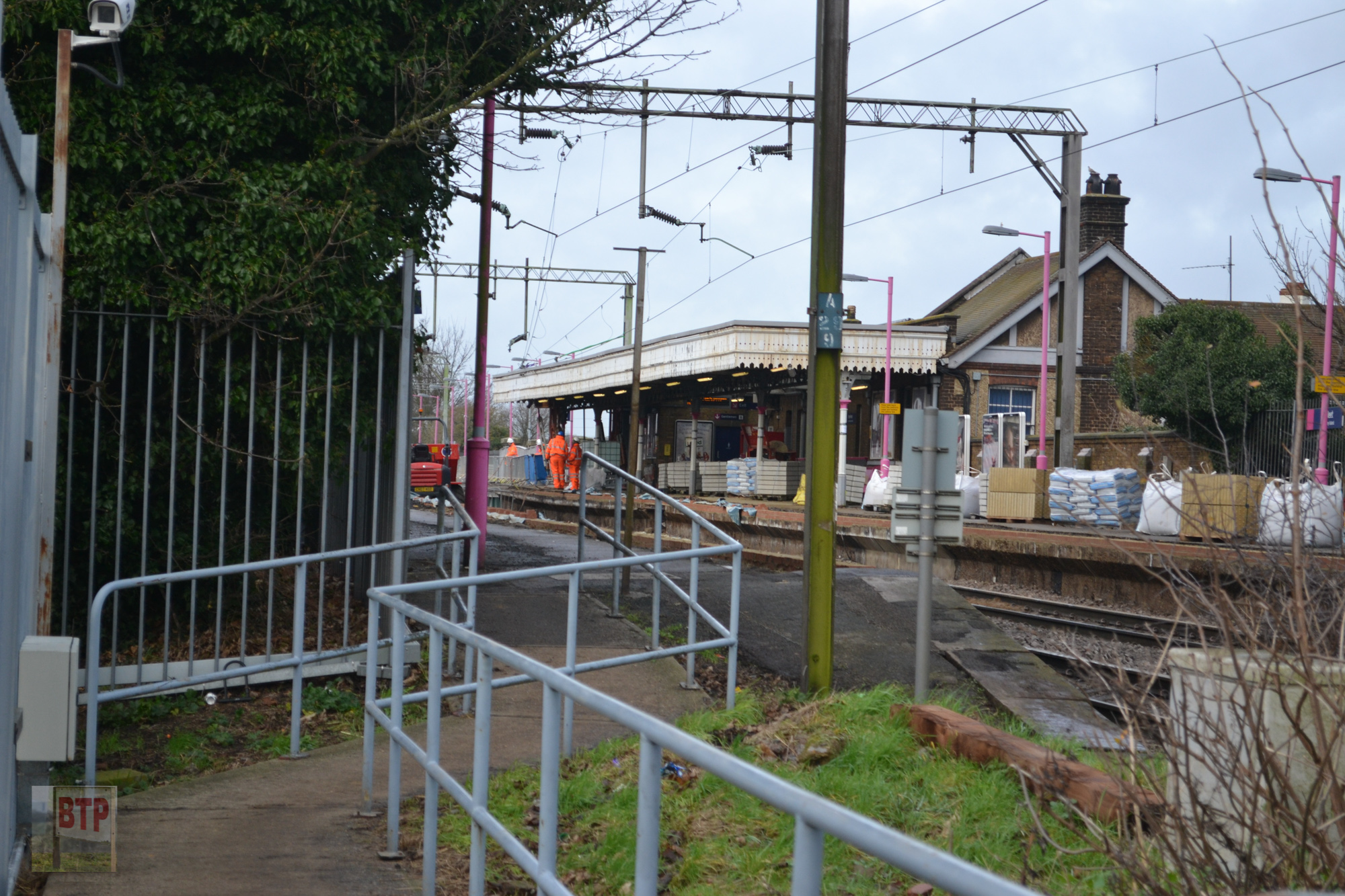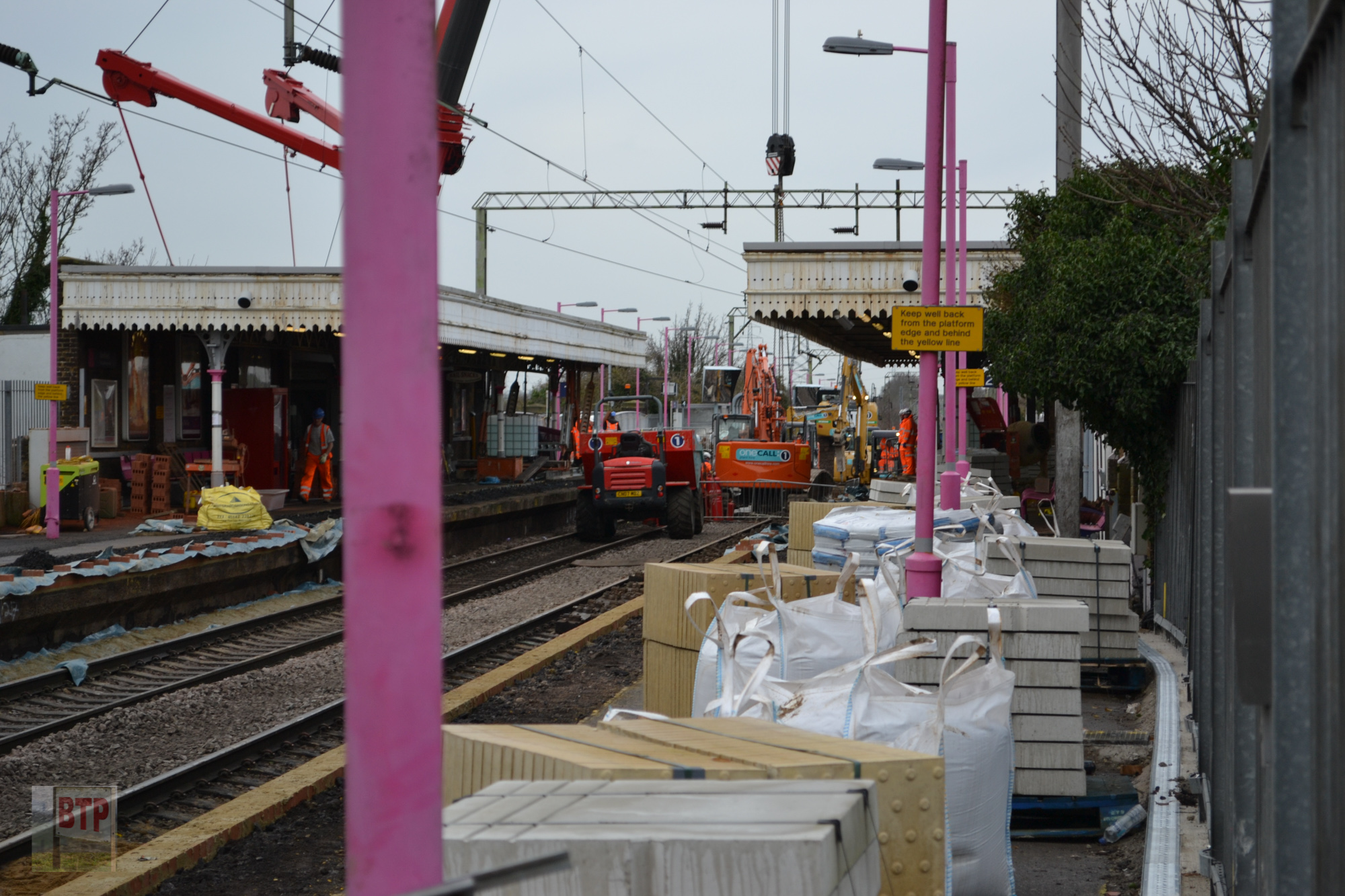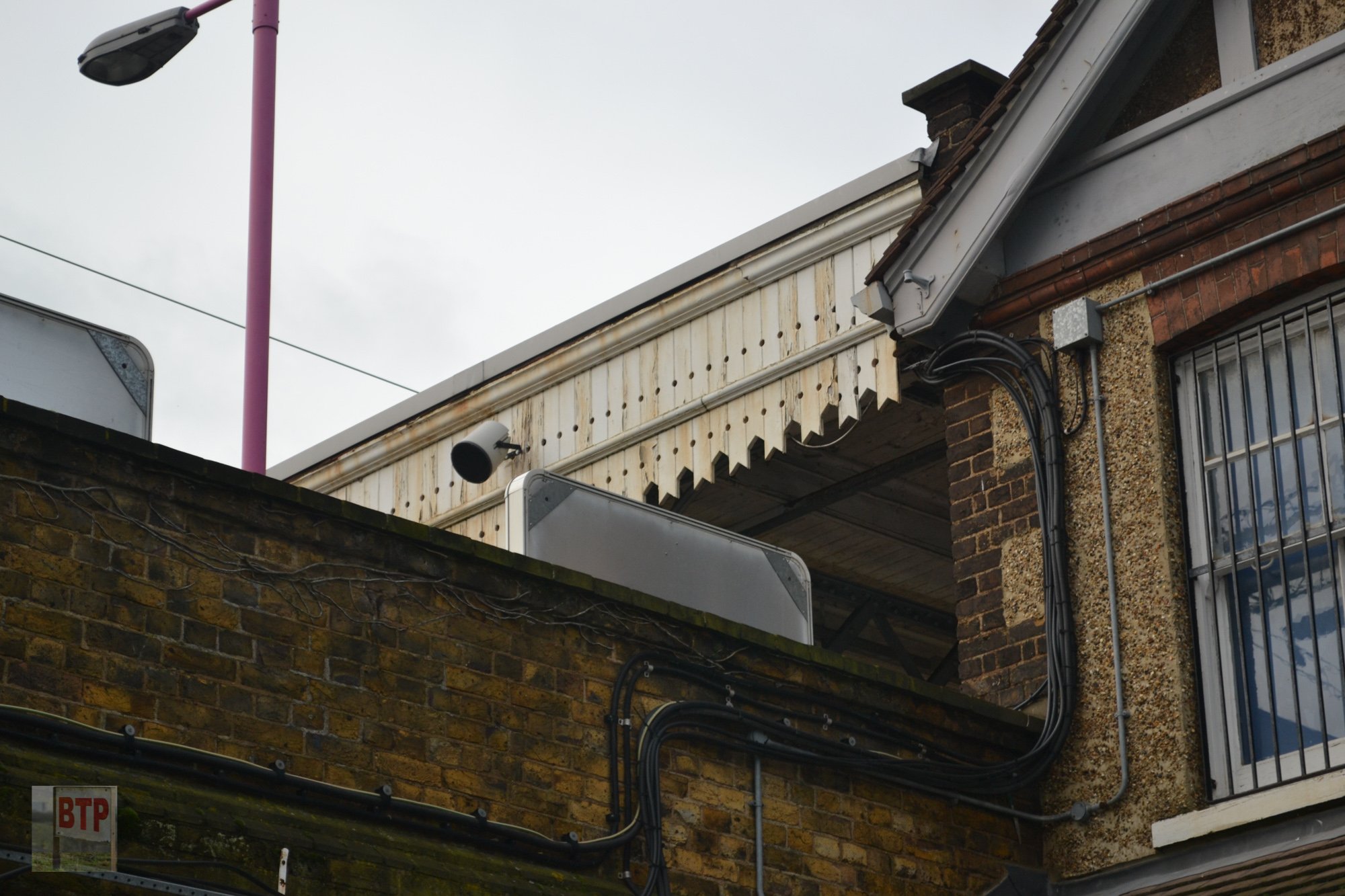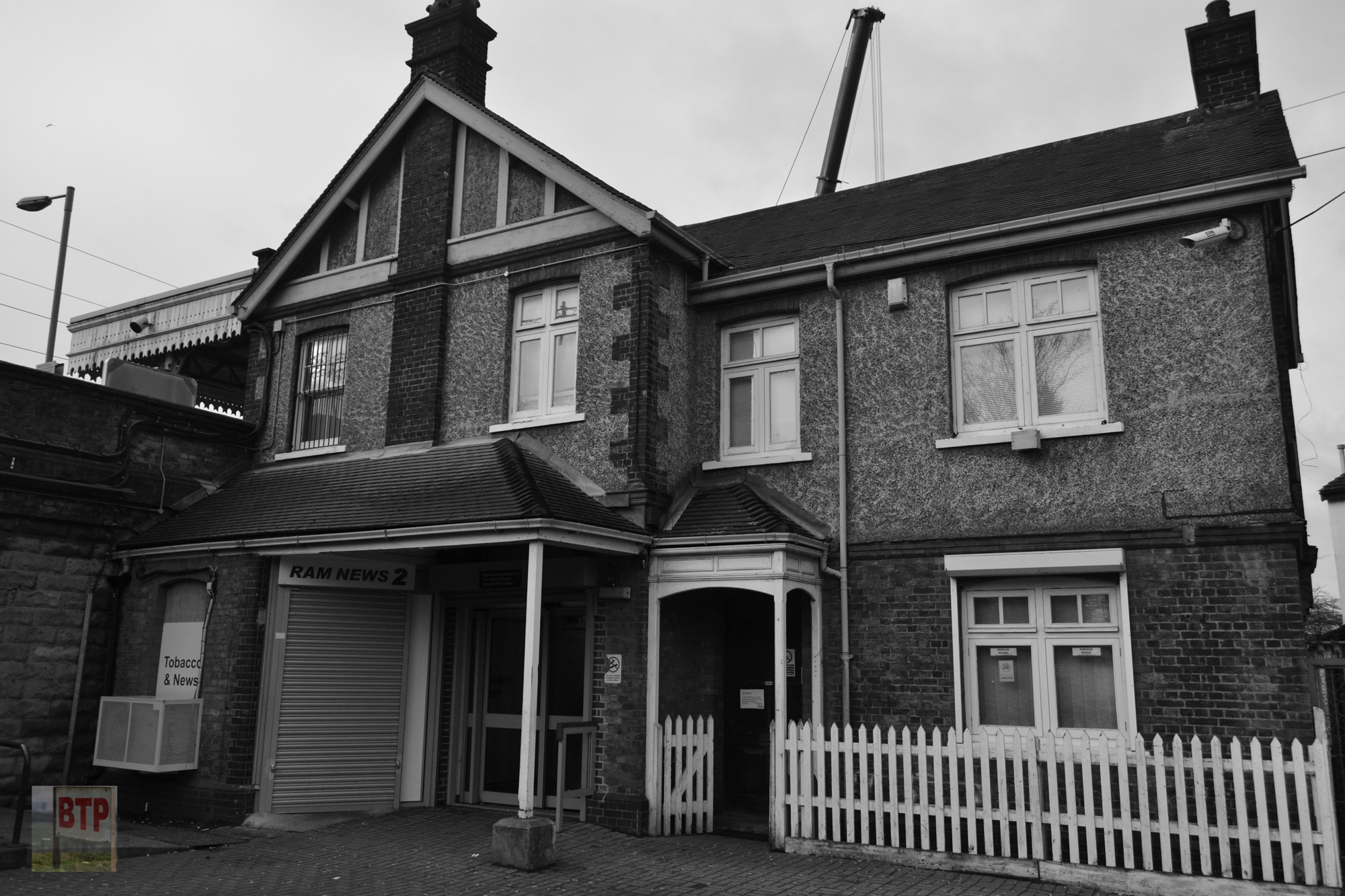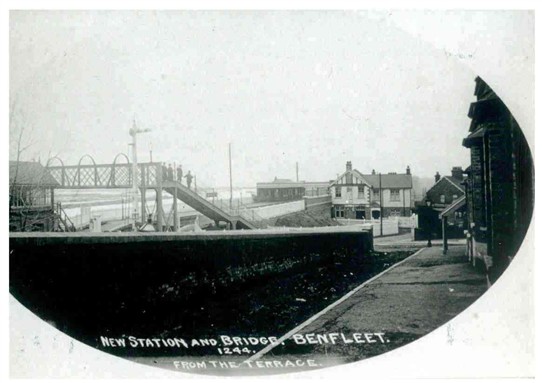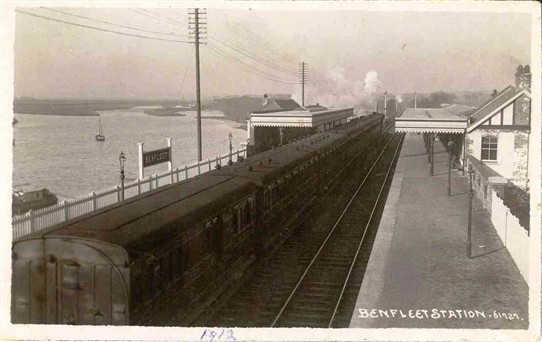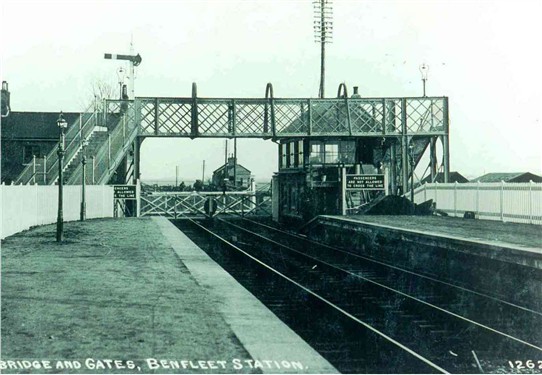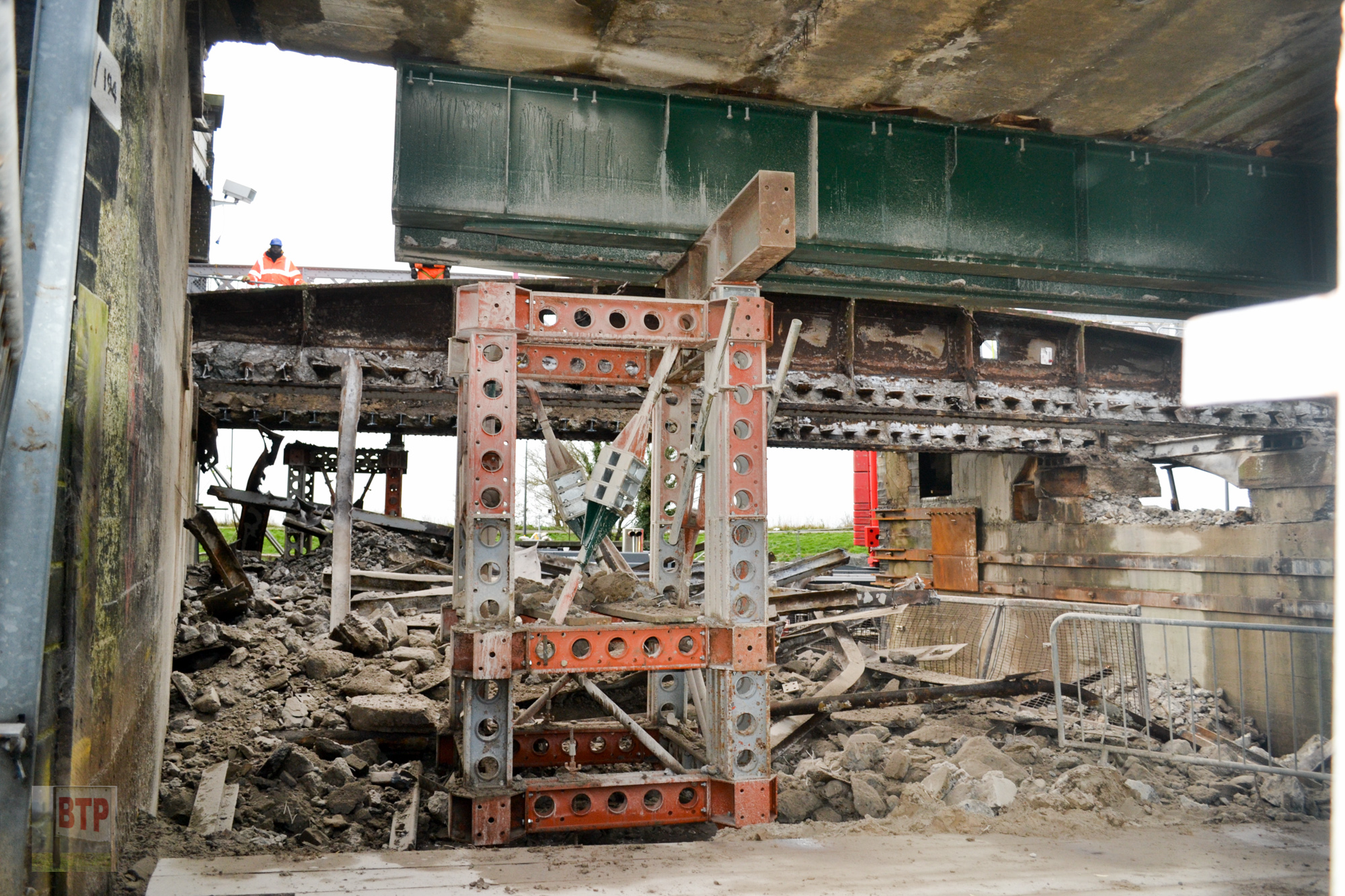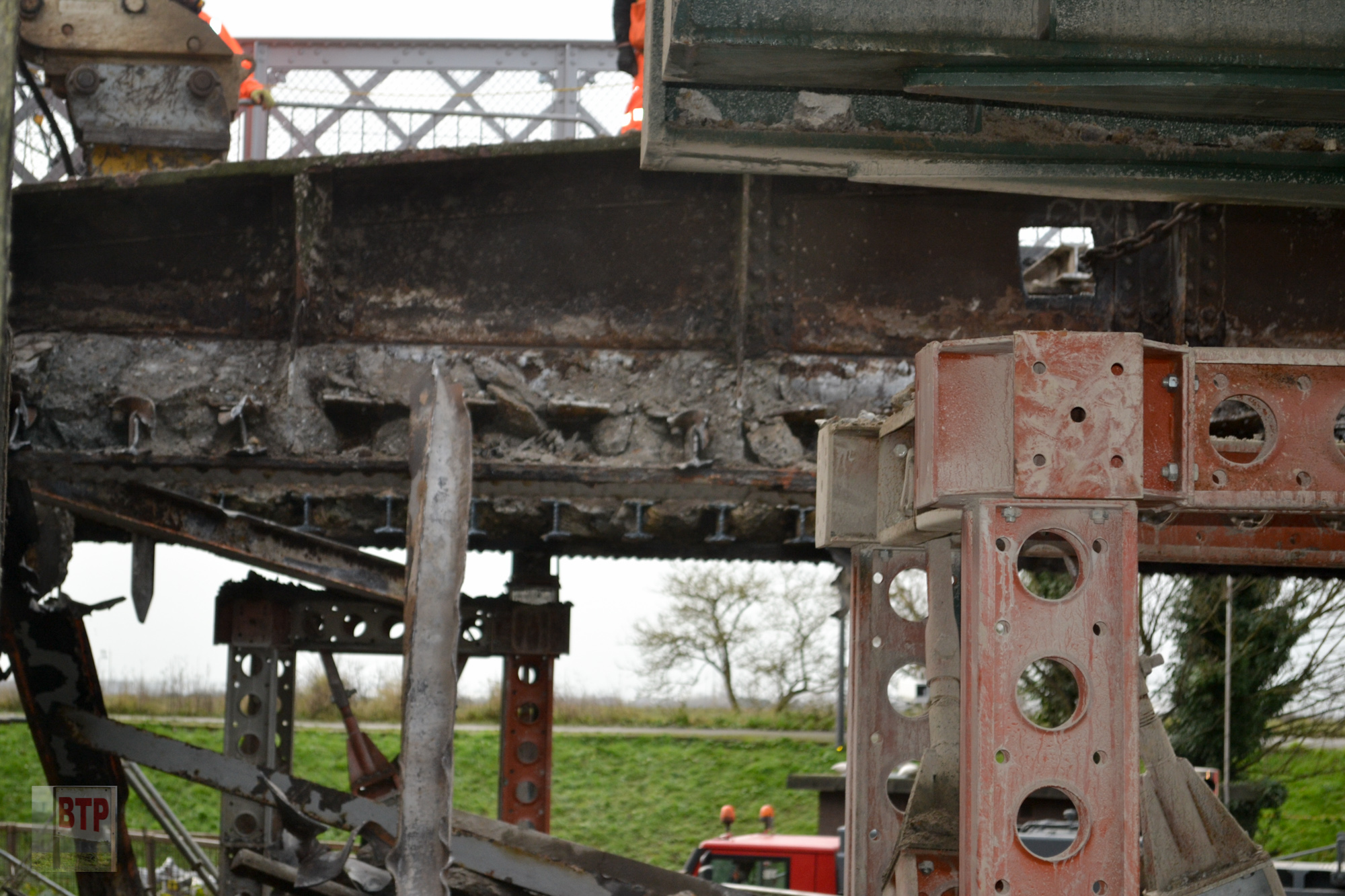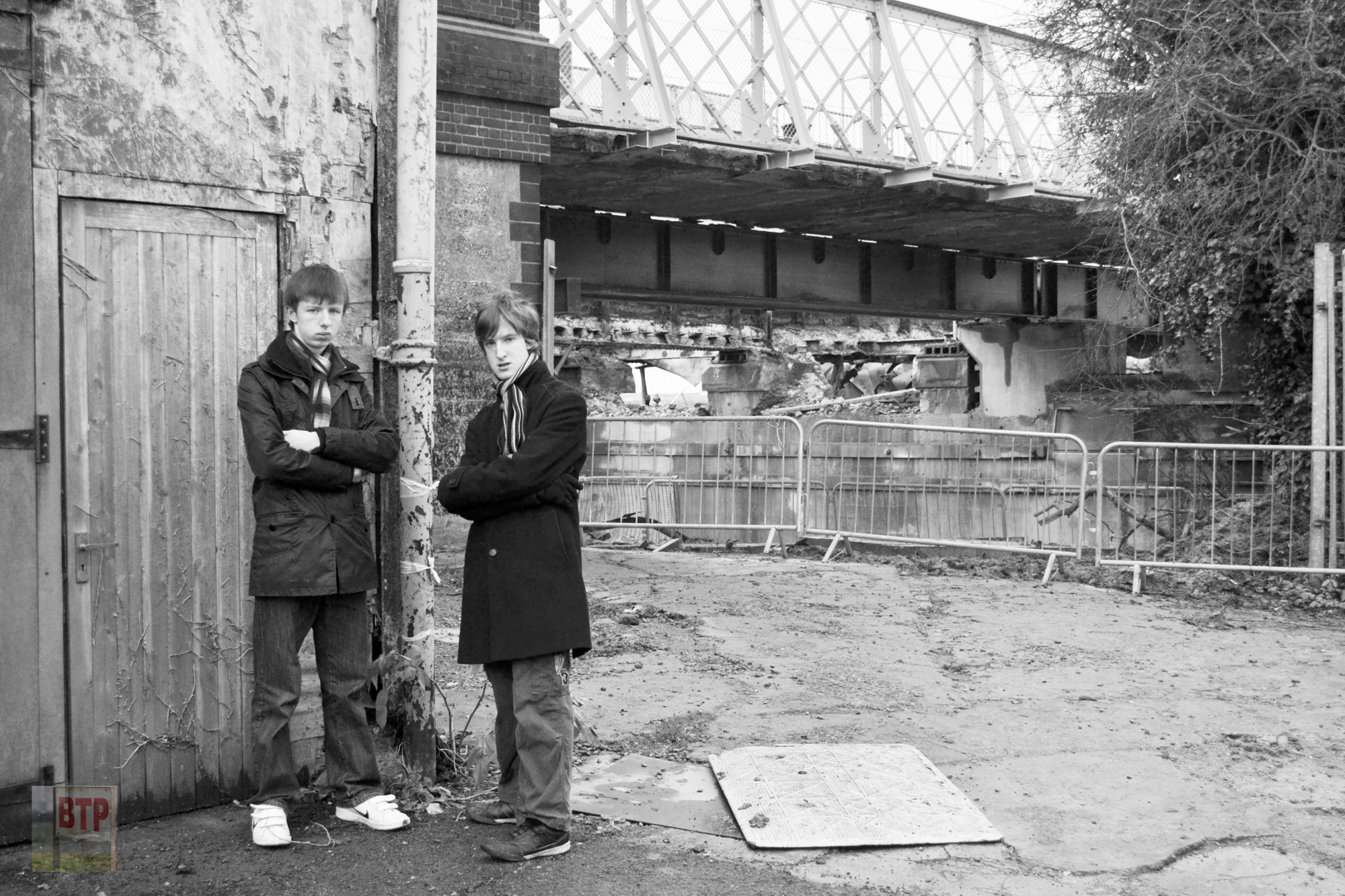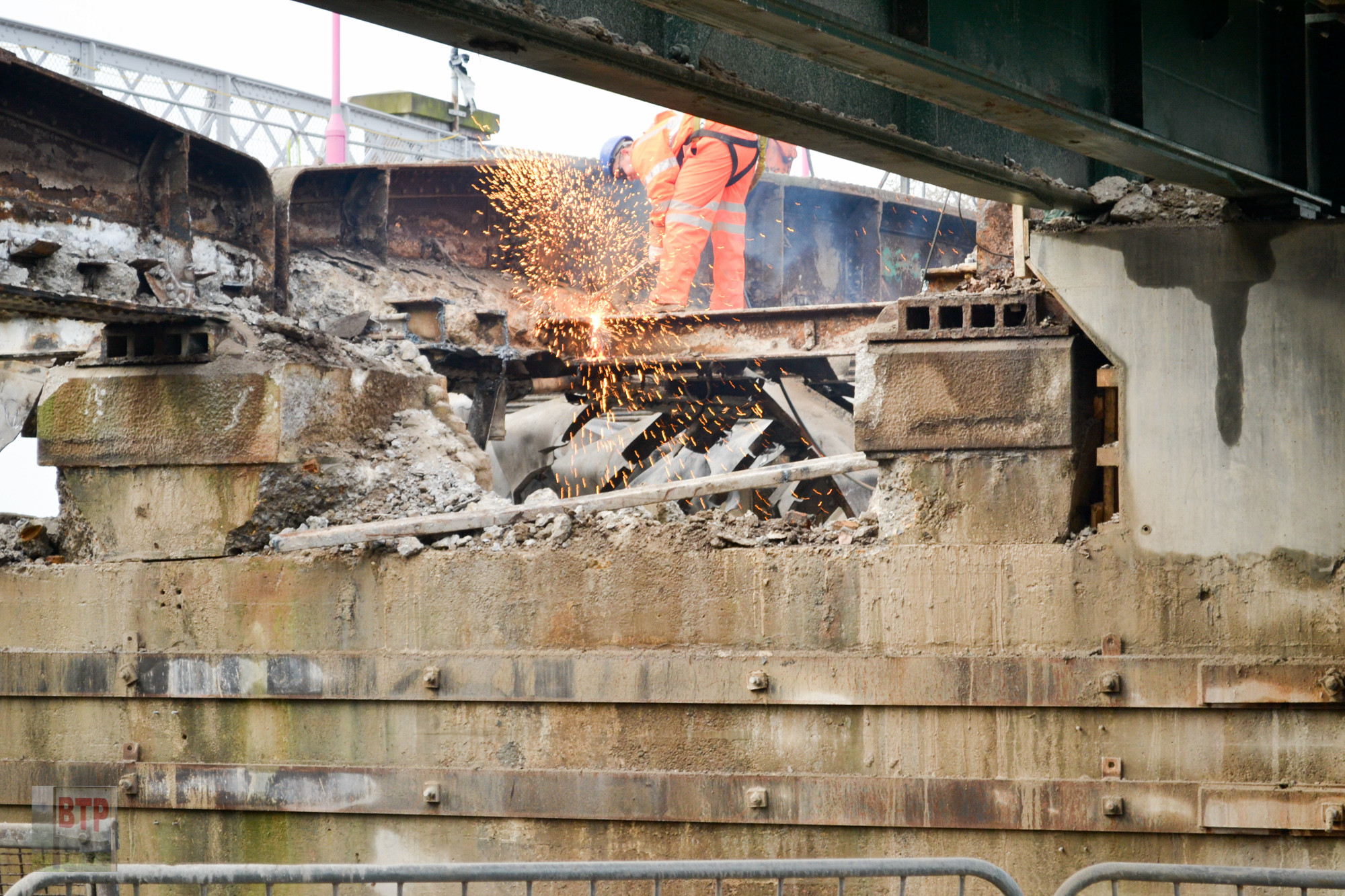Prior to the construction of the Colvin opening bridge in 1931, a ferry and stepping stones at low tide were used to get from Benfleet to Canvey and back. The stepping stones were cast into buckets originally and were removed in 1931 and held in the old Canvey Council Offices down Long Road for a long time. In 2012 however, they were moved close to their original site again in the Olympic Park just south east of the current Benfleet bridge. You can still see the worn down centres of them where people would have trodden, and you can now step those same steps for yourself. There was also a gravel causeway across the silt prior to the building of the bridges and the gravel from this too can be seen today. Here you can watch a British Pathe clip of the causeway and stepping stones being used alongside the 1931 bridge which is being constructed.
Whilst this video doesn’t reflect our current professional video quality, it does show the demolition and replacement of the Benfleet station bridge.
The Station
Benfleet station was first opened in 1855. The Royal Assent was given to extend the line from Pitsea station, rebuilt in 1855 but had existed decades earlier, as far as Leigh and Southend in an 1852 Act of Parliament. The 1855 wooden Benfleet station and platform unfortunately burnt down in 1903 and a new station – the one seen currently, was opened in 1912. The platforms too are very close to their original form and still feature white wooden embellishments (canopies) in good condition similar to that of the other platforms along the current C2C line built at this time, although these are said to be gradually decaying upon close inspection. Older photos from the Benfleet Archive.
Over the Christmas of 2012 major modification came to the Benfleet railway bridge which goes over Ferry Road leading to the bridge to Canvey. Joe and I managed to visit the bridge whilst this was going on over Boxing Day. Here they were removing a large steel curved shape similar to the one (possibly the exact one) seen in the sepia old photograph above of the platform from eye level. You can see this taking place in our video above. Apart from some cosmetic change to the platform and rail-bed, as well as the bridge which now has ugly steel supports bolted into it, the major task caused very little disruption to the form and external structure of the railway. James Hanson, project site engineer, reports:
Since mobilisation in late October; BAM Nuttall (with the help of various subcontractors) have faced a string of setbacks and problems that have kept even our experienced team scratching their heads. Our dedicated team of suppliers and subcontractors from across the country have aided us in coming up with the necessary solutions. The preparation for the main works have required an unplanned intensive piling scheme – involving installation of sixteen twelve metre long piles, after discovering extremely poor ground conditions, 24 hour working on the station platforms and the installation of support beams weighing up to 12.5 tonnes to the bridge soffit. No easy feat considering the working space available and our aspiration to maintaining traffic flow under the structure during peak times. We have discovered huge culverts, abandoned headwalls and cess tanks, river beds and old oak piles – all remnants from the damming of Church Creek many years ago. We’ve even had the Thames at spring tide to keep at bay, but all in a days work for the dedicated team.
Despite the set-backs and the weather, the team are confident and eager to get stuck in for a Christmas that is sure to offer up more surprises and enough challenges to test even the most experienced staff. We look forward to the completion of the project before the New Year and will be happy to have contributed just a little bit to the history of Benfleet.

